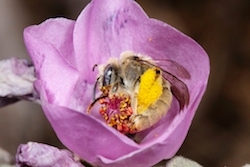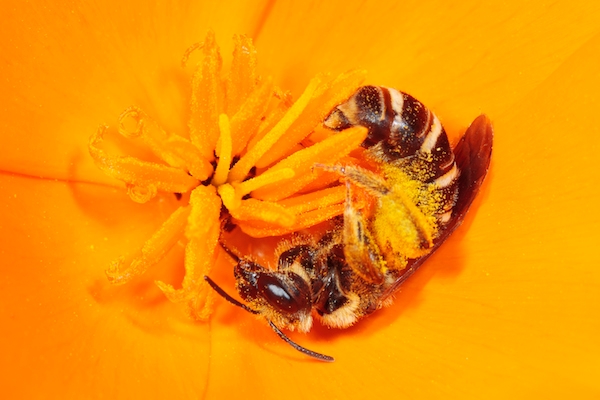The 1,600 species of wild bees that buzz their way to California gardens and green spaces get hungry, and there's a lot city dwellers and suburbanites can do to create an appealing buffet for the valuable pollinators. California Bees & Blooms: A Guide for Gardeners and Naturalists is a friendly new guidebook that shows readers how to make native bees thrive in an urban environment—and makes the case for why it's important to help them do so.
Home gardeners will want to post the chapter “Urban California's Best Bee Attractors” in their toolsheds for constant reference at planting time. Naturalists and other curious types wanting to identify and learn about the bees already visiting their gardens or communities can browse accessible chapters parsing the huge diversity of species. Educators will find general information useful for lessons for even the youngest of audiences, including who stings and why, where bees sleep at night, and who does the “waggle dance,” a “figure-eight shimmy” used for communication in hives.

The book project is a University of California-grown collaboration. Co-authors are Gordon Frankie, a UC Berkeley professor of entomology; Robbin W. Thorp, a professor emeritus of entomology at UC Davis; Coville, an insect and spider photographer who received a Ph.D. in entomology from Berkeley; and Barbara Ertter, a curator at the UC Berkeley-based University and Jepson Herbaria.
The book is published by Heyday Books in collaboration with the California Native Plant Society.
Related
Foodie Bees: Insects Head Downtown for Dinner, National Geographic article.
